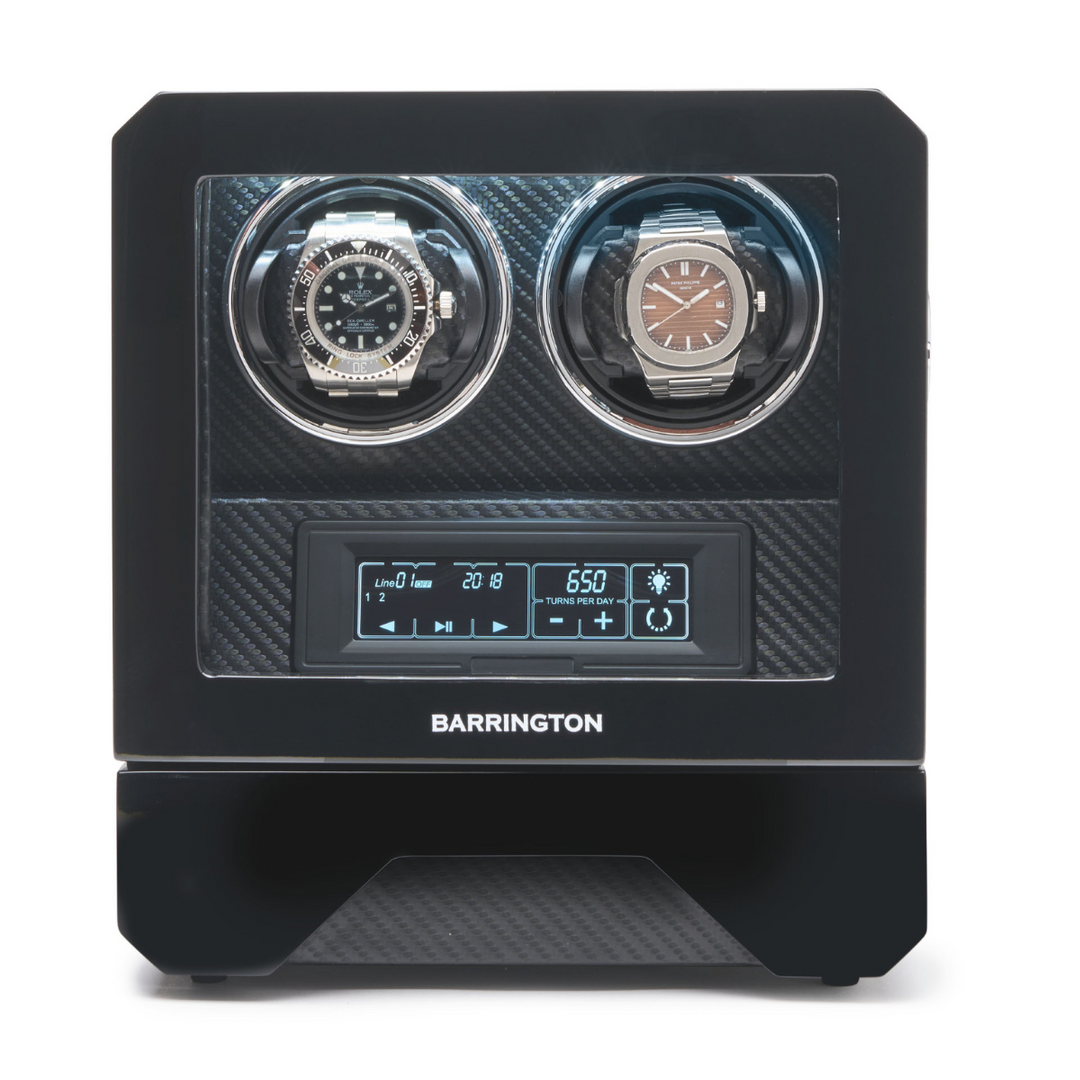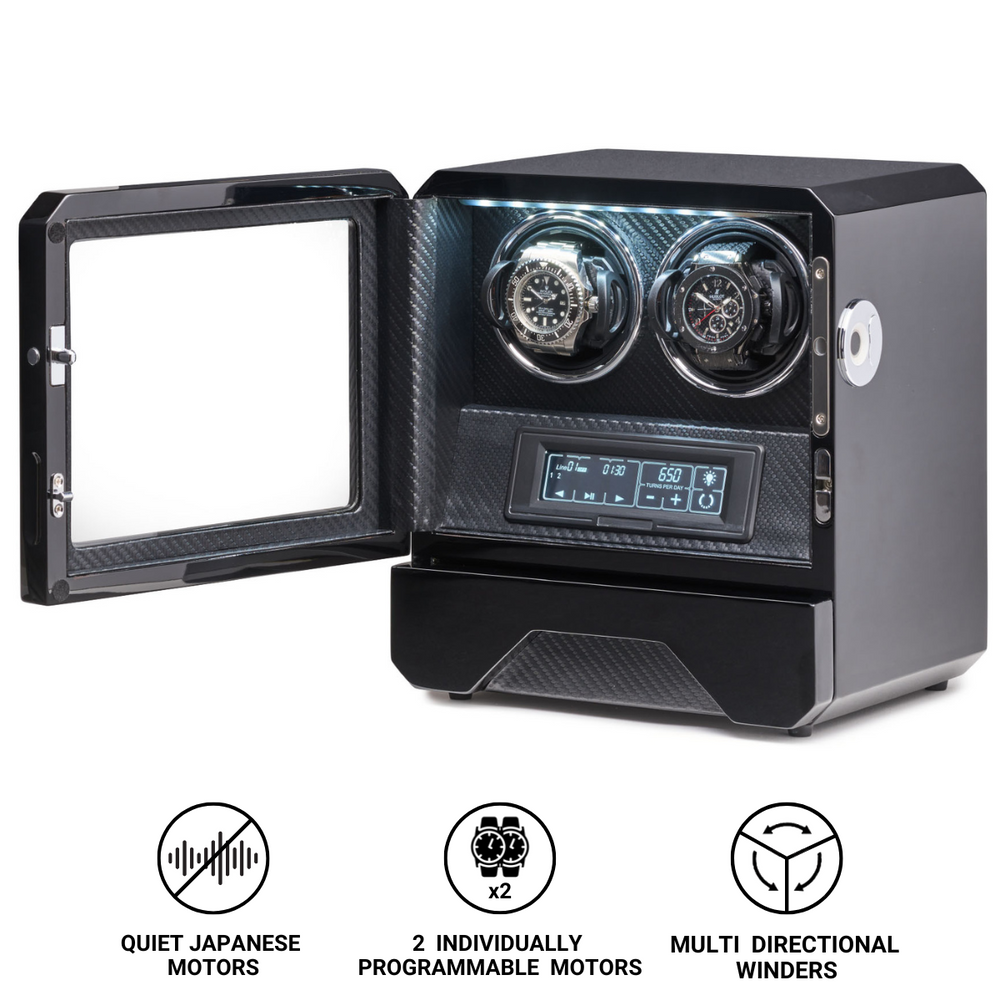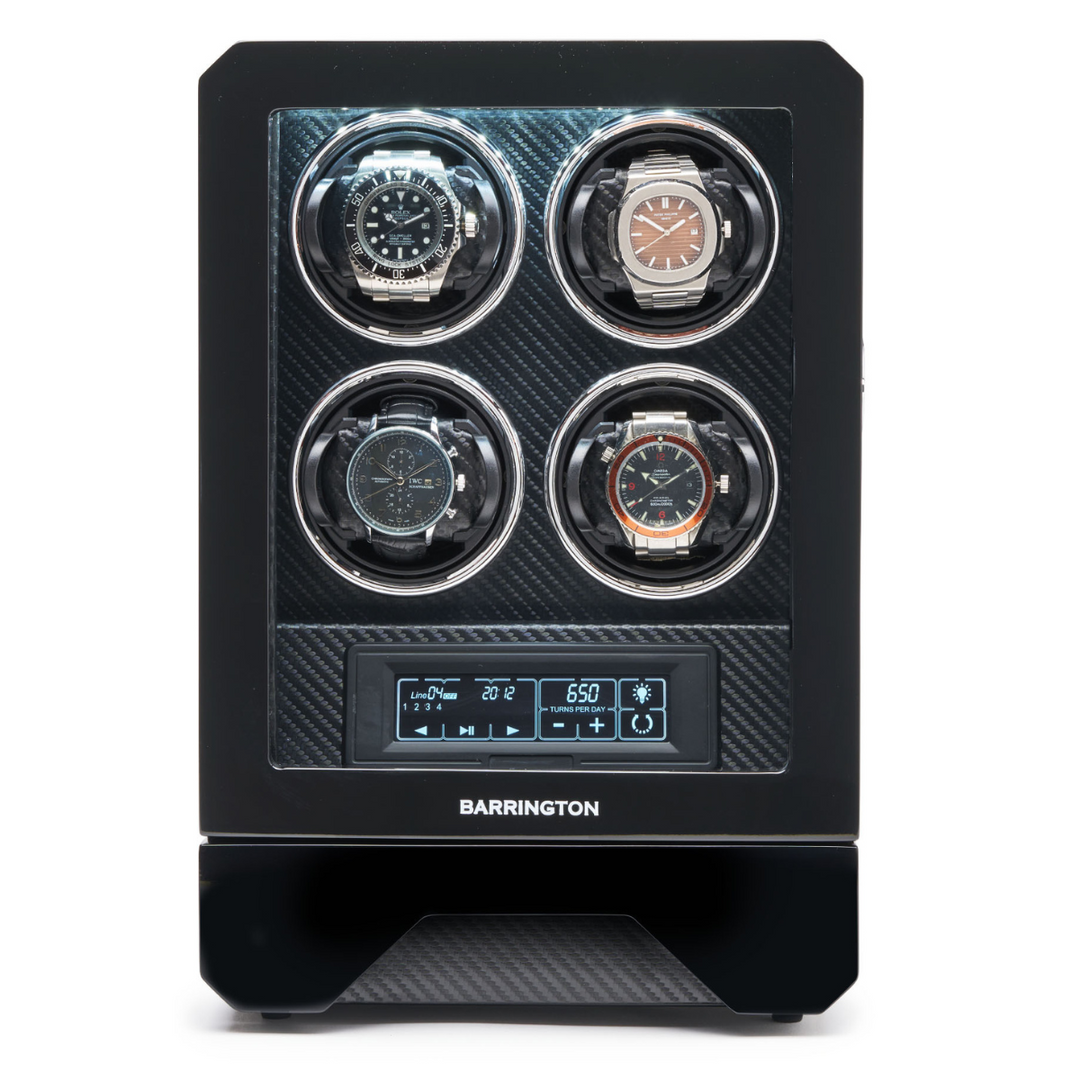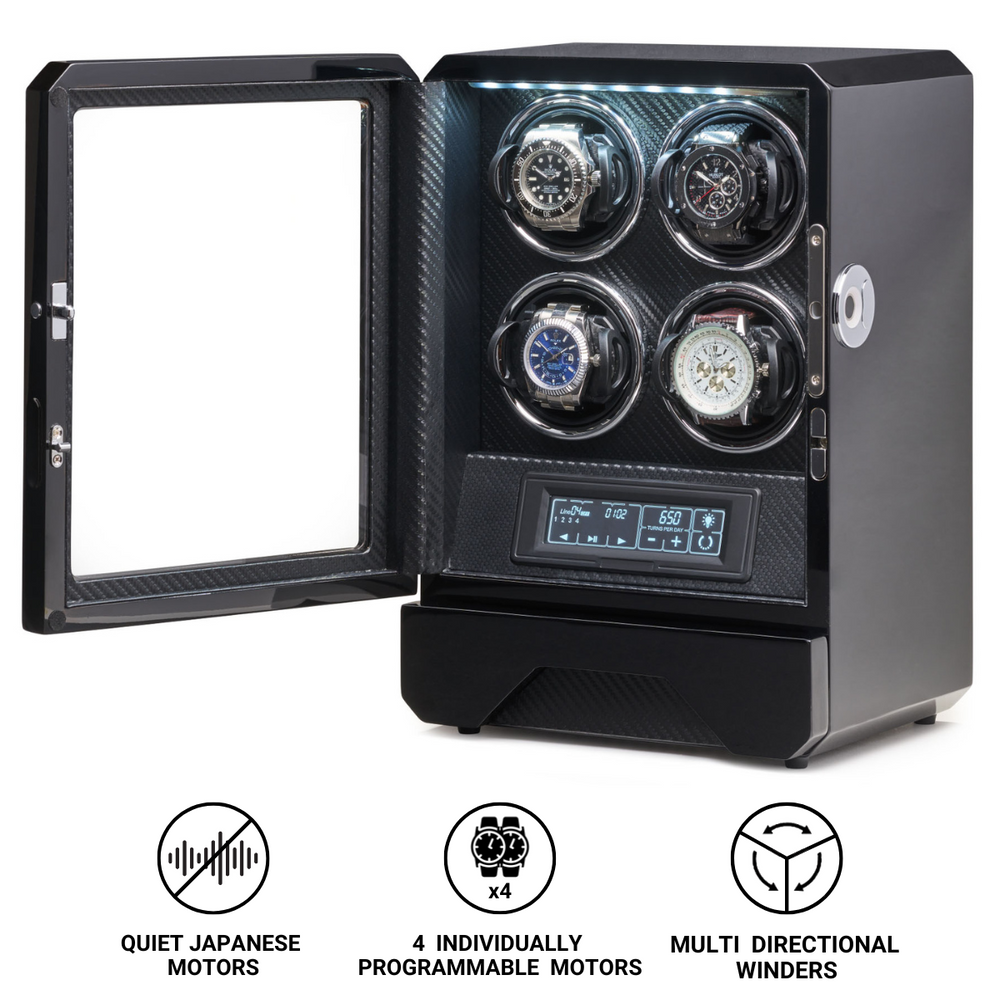What is Exhibition Caseback?
Few features in modern watchmaking capture the imagination of collectors and enthusiasts like the exhibition caseback. This transparent window on the back of a timepiece transforms a watch from a mere instrument of time into a miniature gallery of mechanical artistry. It allows the wearer to witness the rhythmic motion of gears, springs, and bridges, to observe the beating heart of the movement that powers the watch.
The exhibition caseback represents a fusion of form and function. It invites admiration of horological craftsmanship while celebrating the very mechanism that defines traditional watchmaking. More than a design flourish, it is an expression of transparency, authenticity, and respect for mechanical beauty.
The Origins of the Exhibition Caseback
The idea of revealing the movement inside a watch is not as modern as it may seem. Its origins can be traced to the 18th and 19th centuries, when pocket watches were often made with decorative, skeletonised movements. Wealthy patrons commissioned watchmakers to create ornate calibres with hand-engraved bridges, blued screws, and enamelled details that were as much works of art as they were technical achievements.
However, these details were typically hidden beneath solid metal casebacks. To display them, some manufacturers began fitting watches with hinged dust covers or transparent crystals, allowing the owner to admire the movement without exposing it to dust or damage.
With the rise of wristwatches in the 20th century, the aesthetic focus shifted to the front of the watch. Casebacks were designed primarily for protection, not display. It was not until the mid-20th century, when mechanical movements reached an extraordinary level of refinement, that brands began to reconsider the potential of transparent casebacks.
Patek Philippe and Vacheron Constantin were among the early adopters, introducing watches with sapphire crystal backs to showcase their exquisitely finished movements. By the late 20th century, the exhibition caseback had become a hallmark of fine watchmaking, symbolising transparency, craftsmanship, and prestige.
What Defines an Exhibition Caseback
An exhibition caseback is a transparent back cover on a watch case, typically made of sapphire crystal, though mineral glass or acrylic may also be used in more affordable models. It allows a clear view of the movement inside the watch without compromising durability or water resistance.
The caseback is usually secured with screws or a threaded design, ensuring that it remains sealed against dust and moisture. The transparent crystal is carefully integrated into a metal frame, often made of stainless steel, gold, or titanium, depending on the case material.
While many exhibition casebacks display the entire movement, some feature a smaller circular window that reveals only the balance wheel or rotor, offering a partial view of the mechanics. Others are fully open, framed by engraved text indicating model details, water resistance, or serial numbers.
The purpose of the exhibition caseback is not only aesthetic. It also serves as a testament to the quality and confidence of the watchmaker. A manufacturer willing to expose its movement to scrutiny demonstrates pride in its craftsmanship, finishing, and technical precision.
The Materials Behind the Transparency
The success of the exhibition caseback depends largely on the choice of material used for the transparent window. Durability, clarity, and scratch resistance are key considerations.
-
Sapphire Crystal
Sapphire crystal is the preferred choice for luxury watches due to its exceptional hardness and optical clarity. It is virtually scratchproof, second only to diamond on the Mohs scale of hardness. Modern manufacturing allows for thin, curved sapphire crystals that maintain both strength and elegance. -
Mineral Glass
Used in mid-range watches, mineral glass offers decent scratch resistance and good optical performance at a lower cost. However, it is more prone to scratching and less durable than sapphire crystal over time. -
Acrylic
Acrylic casebacks are rare but occasionally used in vintage-inspired models. While they can scratch easily, they are lightweight and offer a warm, slightly distorted view that some collectors find nostalgic.
The crystal is often treated with anti-reflective coatings to enhance visibility, ensuring that the intricate details of the movement can be admired from any angle.
A Window into Horological Craftsmanship
An exhibition caseback transforms the act of wearing a watch into an intimate experience. It allows the owner to witness the constant dance of mechanical motion—the glide of the rotor in an automatic watch, the pulse of the balance wheel, and the seamless engagement of gears transmitting energy from the mainspring.
This visibility also highlights the artistry behind traditional finishing techniques. High-end movements are not merely functional mechanisms but canvases for decoration. Techniques such as perlage, Geneva stripes, blued screws, and hand-engraved bridges reveal the dedication of master watchmakers who finish even the parts that are rarely seen.
In this sense, the exhibition caseback serves both as a technical and artistic statement. It reflects the fusion of precision engineering and aesthetic refinement that defines haute horlogerie.
How Exhibition Casebacks Changed Modern Watch Design
The widespread adoption of exhibition casebacks in the late 20th century marked a significant shift in the philosophy of watchmaking. As quartz technology became dominant, mechanical watches evolved from tools of necessity into symbols of craftsmanship and artistry. The exhibition caseback became a means of communicating this transformation to a new generation of collectors.
Luxury brands began designing movements specifically for display, ensuring that components visible through the caseback were as visually impressive as they were mechanically sound. Skeletonised rotors, engraved balance bridges, and polished screws became signatures of refinement.
Even sports and tool watches, traditionally associated with robustness and utility, began to incorporate exhibition casebacks, demonstrating that durability and beauty could coexist. Brands like Omega, IWC, and Panerai introduced models with sapphire backs while maintaining water resistance and performance.
In modern horology, the exhibition caseback has become almost standard in mechanical watches priced above entry level, serving as both a visual pleasure and an assurance of authenticity.
Movements Designed for Exhibition
The presence of a transparent caseback has inspired watchmakers to elevate the aesthetics of their movements. This attention to visual presentation is evident in both high-end and mid-range timepieces.
-
Decorated Manual Movements
Manual-wind watches often feature intricate finishing visible through the caseback. Brands such as A. Lange & Söhne and Patek Philippe are renowned for their hand-engraved balance cocks, mirror-polished screw heads, and perfectly aligned Geneva stripes. These details transform the movement into a work of art. -
Automatic Movements with Display Rotors
Automatic watches often showcase their rotors through the exhibition back. Some manufacturers, like Audemars Piguet and Breguet, decorate their rotors with engraved logos, openwork designs, or precious metal inlays. Others, such as Seiko and ETA, employ skeletonised rotors that reveal more of the gear train beneath.
The growing demand for transparent casebacks has also encouraged innovation in movement design. Some watchmakers, including Roger Dubuis and Hublot, construct movements that are fully skeletonised, allowing light to pass through from both sides of the watch.
The Balance Between Aesthetics and Functionality
While exhibition casebacks offer undeniable beauty, they also pose challenges for watch designers. The primary concern is maintaining water resistance and durability. Traditional solid casebacks provide superior protection against shocks, pressure, and corrosion, making them ideal for professional diving and military watches.
For this reason, some high-performance timepieces, particularly those certified for deep-sea diving, retain solid metal backs. Rolex’s Submariner and Omega’s Seamaster Professional, for instance, continue to favour closed casebacks for maximum strength and sealing reliability.
However, advancements in sealing technology and sapphire crystal manufacturing have narrowed this gap significantly. Many modern sports watches, including models from Tudor and Oris, now feature sapphire casebacks that meet rigorous water-resistance standards.
The Symbolism of Transparency
The exhibition caseback carries symbolic weight beyond its visual appeal. It represents openness and authenticity—a statement that the watchmaker has nothing to hide. It invites trust and appreciation, allowing the wearer to see the proof of craftsmanship and quality firsthand.
For enthusiasts, this transparency fosters a deeper emotional connection with the watch. Observing the steady motion of the balance wheel or the rhythmic rotation of the rotor creates a sense of intimacy and fascination. It transforms the watch from a passive object into a living mechanism.
The exhibition caseback also serves an educational purpose. For collectors and newcomers alike, it offers an opportunity to study the anatomy of a movement and to appreciate the complexity and elegance of mechanical timekeeping.
Modern Innovations and Trends
In recent years, the exhibition caseback has evolved in both form and function. Advances in materials and design have led to new possibilities that enhance both aesthetics and practicality.
Some brands have introduced double-sided sapphire construction, where both the dial and caseback are transparent, creating an uninterrupted view through the movement. Others have experimented with coloured sapphire crystals, giving the movement a subtle tint while maintaining visibility.
Laser engraving and micro-sculpting techniques now allow for intricate designs to be etched directly onto the sapphire surface, displaying logos, serial numbers, or decorative motifs without obstructing the view of the movement.
In ultra-high-end horology, manufacturers such as Greubel Forsey and MB&F have elevated the concept further, turning the entire case into a three-dimensional showcase of horological architecture. In these watches, the exhibition caseback becomes part of a broader philosophy of openness and mechanical theatre.
Conclusion
The exhibition caseback stands as one of the most elegant expressions of modern watchmaking. It celebrates the transparency, craftsmanship, and artistry that distinguish mechanical watches from mere instruments of time. By revealing the intricate interplay of gears and springs, it invites admiration for the human ingenuity that lies within.
From its origins in ornate pocket watches to its place in contemporary haute horlogerie, the exhibition caseback has evolved into a defining feature of fine watch design. It connects the wearer to the soul of the timepiece, offering a perpetual reminder that every tick and every oscillation is a triumph of precision, patience, and beauty.
To gaze through an exhibition caseback is to witness the living heart of horology itself—a world of motion and craftsmanship captured within a transparent frame, forever turning the measurement of time into a work of art.









